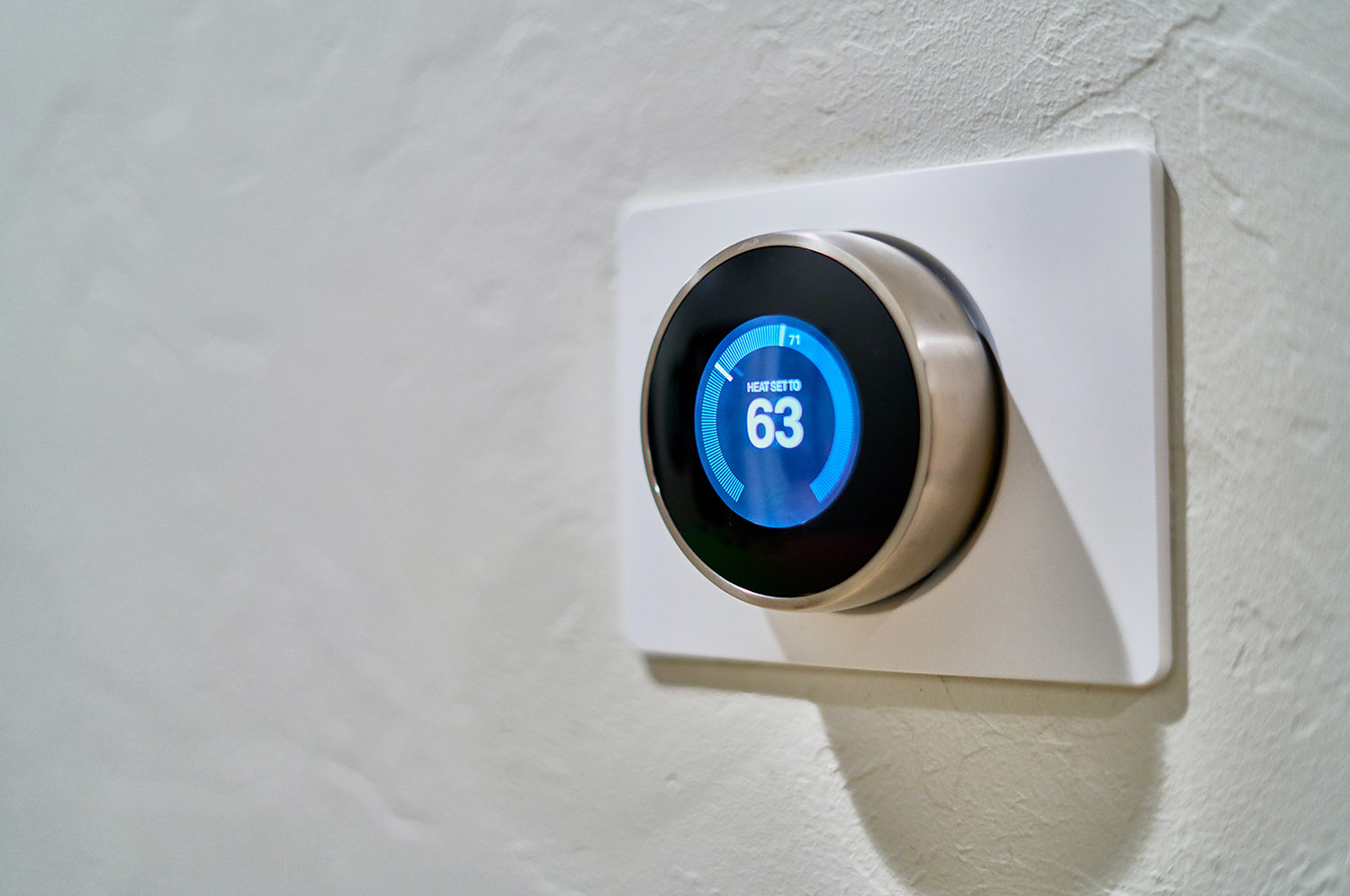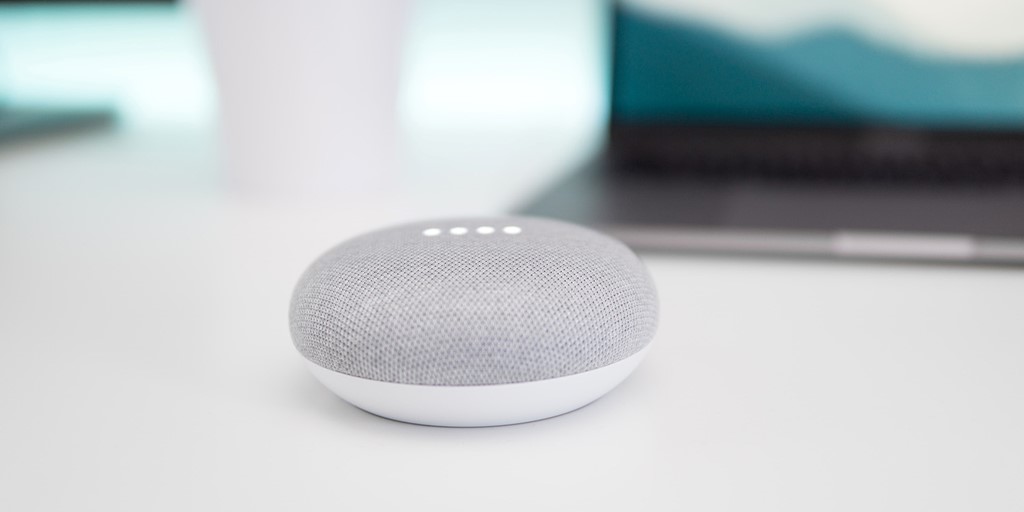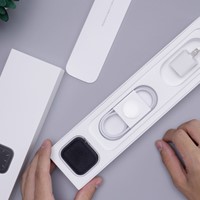Internet of Things has been one of the leading tech trends for the last couple of years. And it seems we're nowhere near the end of it! As technology evolves, new opportunities are emerging and we can't wait to see what the future of IoT will bring.
Can anyone imagine the world without the internet now? You can talk with people from other parts of the world, do shopping without going to the mall, or ask your coffee maker to make you a nice brew while you are still in bed. You can also set your AC system to turn on while you are on your way back from work - all thanks to various devices connected to the internet.
According to a 2020 survey from Statista, the average American had more than ten connected devices in their household. And that number is only going to grow in the coming years - it's estimated that the number of connected devices will surpass 25.4 billion in 2030. Thanks to super-fast and reliable broadband internet connections being pretty much a norm (and 5G mobile internet being already available in many parts of the world), producers are also going out of their way to create intelligent household gadgets and industrial machines. Just look at what we already have!
Sport bands that track everything from our pulse to our gym performance and give suggestions on what exercise to do next, while cars can inform us in advance about a traffic jam and suggest an alternative route. And that’s barely the start of the “Internet of Things” revolution!

First time hearing the name? Keep reading. In a moment, we’ll explain what the Internet of Things is, how it works, and touch on the topic of risks associated with having everything connected to the wide web so that you’ll know everything you need to about our smart devices.
What exactly is the IoT?
Let’s start with an explanation of what the Internet of Things even is. In the Oxford English Dictionary, you will find that the internet of things is defined as “a proposed development of the internet in which many everyday objects are embedded with microchips giving them network connectivity, allowing them to send and receive data”.
It sounds rather technical, doesn't it? However, the whole idea behind the Internet of Things is actually pretty simple. IoT refers to any physical object that can gather and store data from outside via a wireless network. So whether it is an ordinary household object like a toothbrush or coffee maker, or a sophisticated industrial machine, as long as it can be connected to the internet, it counts as an IoT device.
The main thing that makes IoT devices “smart” compared to their regular versions is that all IoT devices have mini-processors and various sensors inside them. After being connected to the network, those devices can receive, send, and analyze the data they receive every time they are used and then adjust their settings to the user’s preferences. IoT devices also often come with a dedicated smartphone app through which the user can precisely control how the device works.

For instance, let’s say you own a smart thermostat installed in your home. Compared to a regular thermostat which requires a dial or remote control to set the temperature in the room, a smart thermostat lets you access and manage the temperature of your entire house through your smartphone - no matter where you are. So, as you are returning from work, you can set the thermostat to start heating or cooling your house - when you arrive, you’ll have the desired temperature inside. And if it happens that you forget to turn off the AC or heating when leaving for work, you can also turn it off via the app straight away.
But that’s not all. The real power of all smart devices lies in that they can also learn about your preferences and act based on the data they gather. For example, based on the time you typically start the AC, the device can assume this is the time at which you normally return home and then automatically start cooling the room.
What are the main elements of an IoT device?
For the IoT or smart devices to work as intended, they need a few essential elements inside them to work together. Those are the primary device, sensors, operating system, a connectivity option, and a smartphone app. Let’s look at all of those elements in detail and see how they function:
1. The main device, aka the “Thing”
The “things” in the name “Internet of Things” refer to virtually any object we can imagine, of all shapes, sizes, and purposes. Everything nowadays can be fitted with sensors to collect data from their environment - from typical everyday objects like coffee makers or fridges, through fit-for-purpose industrial sensors and controllers, to cars even. Besides collecting and storing the data gathered from the outside and communicating with the cloud server or another device, the device gives suggestions to the end-user based on the data it collects and performs actions they want.
2. Means of communication
But for the device to receive data and send it to the cloud, it first needs a way to connect to a cloud server and other devices. Depending on the type of smart device, this could be via a cellular connection, satellite, Wi-Fi, Bluetooth, low-power wide-area networks (LPWAN), or a gateway/router.

3. System
This is the “true power” of intelligent devices. The software inside these devices tells them how they should respond to the data gathered by their sensors, what the data means, and what actions should be taken at a given moment. The system might only be able to do simple things like check whether the room temperature and humidity are within an acceptable range, or it can work in a far more complex way such as by scanning and monitoring an office area for intruders.
4. Smartphone application
What happens if the temperature is above the acceptable range or there’s an intruder spotted, though? The IoT device then sends a notification to the end-user for them to take action - either via text message or a notification on their smartphone app. When alerted, the user can adjust the AC or check the security camera’s video system from the mobile app, respectively. They can even set rules for the system to act in a specific way - such as automatically changing the temperature or starting an alarm and calling security the second a threat is detected.
What are the benefits of IoT devices?
New levels of comfort
The biggest reason why consumers love IoT devices? They can make our lives much easier, help us make the right choices, and save us a lot of time. Based on the various sensors inside such devices and the data they gather, they know our preferences and can adjust themselves to fit our needs - by learning when we return from work they can turn the AC on and have a fresh cup of coffee ready the moment we open the door.
Easy access to any information you currently need
With our smart devices near us, accessing any necessary information at any given moment is a piece of cake, wherever you are. Smart GPS installed in your car can show you the fastest route to your destination and alert you to traffic jams. And as you are exercising, your smart fit band will measure your pulse, calories burned, speed, and performance - almost like having a professional coach, 24/7.

Security
Rather than worry about what is going on inside your home while you are away, you can monitor the surroundings via a mobile smart security camera - and you’ll get an instant alert if something suspicious happens. And if you ever forgot to lock your front door or car, you can do so using a smartphone app - some smart lock systems can even do it themselves after they notice you have left and forgotten to!
Ability to make better decisions
IoT devices can provide you with a lot of data, from information on your energy use to your car’s technical state and your gym performance. And with that precise information, you will know when and how you should act. Is no one in the living room, but the TV is still on? Your smart TV will send you an alert and ask you whether or not you want to turn it off.
Saving money
Last but not least - if you want to reduce your bills, IoT devices might be your best friends. The sensors inside IoT devices can monitor how much energy or water you are using and show you areas where you can cut costs by adjusting the temperature based on the weather or turning off lights in empty rooms, for example.
Is using IoT devices safe, though?
As useful and convenient as the Internet of Things might be, all IoT devices have a weak point - and it’s, you guessed it, the ability to be connected to the internet. For your laptop, desktop, and smartphone, you most likely have antivirus software installed and regularly updated. You probably also keep an eye on updating your smartphone apps and regularly changing the passwords for them.
But how can you protect your smart fridge or your fitness band? It might sound like a silly question, but the threat is serious - a Netscout survey found that it takes no more than 5 minutes for a new device to be attacked. And the data that IoT devices might store are more than precious for hackers.
If you have an intelligent security system then it most likely has data on the operating time, from which hackers can guess what time you leave and return home. A smart fridge can tell a hacker what you generally eat, where you shop, and how often. And smart assistants like Alexa can even be set to listen and record private conversations and then send them to other people or give away personal data! You surely wouldn’t want your smart gadgets to spy on you in your home, right?

Of course not, but that doesn’t mean you should throw away all of your devices that have access to the internet - that would be going a bit overboard. So what should you do? Here are some simple ways to secure your IoT devices and your data from harm:
• Secure your router first - this is the main route (pun intended) through which criminals might try to take over your IoT devices, so make sure it is set up correctly, has the highest level of data encryption enabled, and that all of your passwords are strong. Don’t put off installing software updates either!
• Keep your IoT devices software up to date - exactly like with your laptop security patches or smartphone app updates, regularly checking for IoT device firmware updates is a must, as they often fix old bugs and patch security vulnerabilities.
• Use unique passwords for your mobile apps and, preferably, multi-factor authentication - a good tip here is to use password generating manager tools to make your logins as difficult to break as possible. Having two-factor authentication such as a one-time confirmation code sent to your mobile phone can keep hackers away from your accounts. Not all apps offer such a feature, but if yours does then make sure to use it.
• Avoid using public Wi-Fi to access your IoT devices - it’s relatively easy to break into the kinds of Wi-Fi networks offered by many coffee shops and hotels, so use your more secure mobile data if possible.
Conclusion
IoT technology is still in its stages of infancy, but its capabilities are already enormous and the popularity of smart devices is growing without a sign of stopping anytime soon. No wonder, as smart devices are incredibly convenient - they can keep the house safe, flowers regularly watered, and energy bills low by giving an incredible amount of control to the end-user.
But the data can be equally (or even more) valuable to cyber hackers, so the more we do to protect our IoT devices (and the data inside them), the better.










 Angry Nerds (Poland)
Angry Nerds (Poland) Angry Nerds (USA)
Angry Nerds (USA) Angry Nerds (Canada)
Angry Nerds (Canada)



